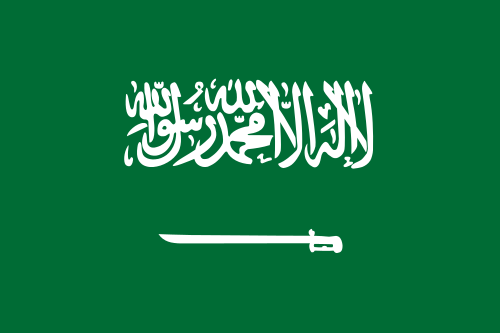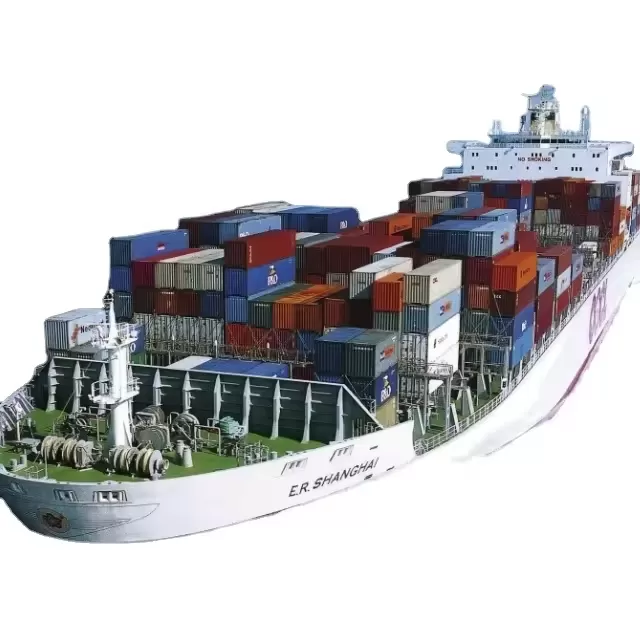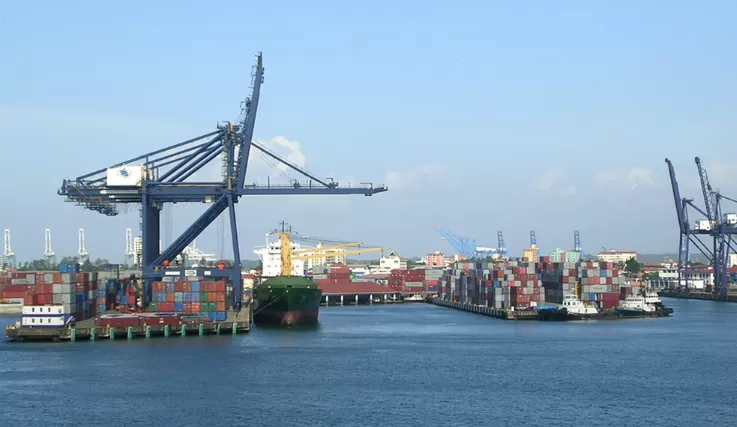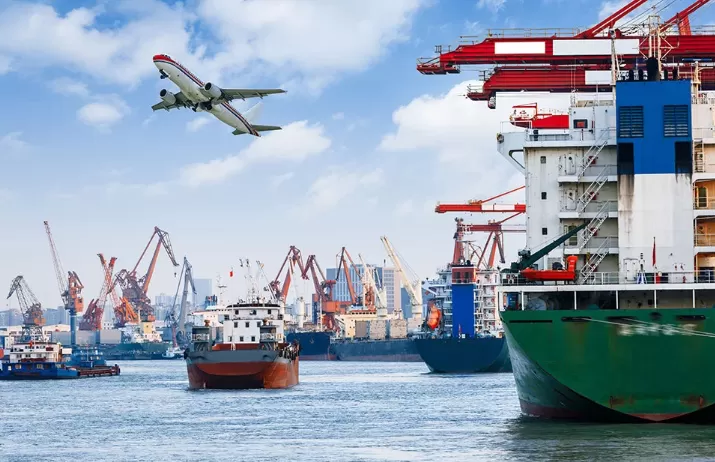Hey Indy — this is a practical, no-fluff guide for getting goods from China into Indianapolis (IND). Short bullets up front, then everything you need: routes, real example costs & times, customs steps (ISF), FBA tips, a sample landed-cost calculation, a glossary, and an FAQ JSON-LD block you can paste into your site.
Are you ready for chaos?
Get real-time quotes for Indianapolis
Get Quotes
Quick note: numbers below are example estimates for 2025 to set expectations. Market rates swing week to week. For firm pricing, submit exact weight, dimensions, HS code and Incoterm. (Sources for the sample ranges: market indexes and official guidance listed at the end.)
TL;DR — Fast answers for busy Indy importers
Cheapest for big loads: Sea FCL → Sea + Rail + Truck (ocean to West Coast → rail to Chicago → short truck to Indy).
Fastest: Air freight / express (door-to-door in 3–7 days).
Best for small urgent restocks: Sea + Express last-mile (sea for main leg, express courier for final clearance) or air for samples.
Amazon sellers: use FBA-ready services (prep, labeling, and confirm FBA warehouse code before shipping).
Want a firm quote now? Hit the CTA in the hero or use the “Ready-to-paste Quote Form” near the end.
Contents (jump links)
Ports & routing overview
Cost & transit examples (2025 estimate table)
When to pick Sea / Sea + Rail / Air
Door-to-door, Incoterms (DDP vs DAP) & Amazon FBA tips
ISF & customs — step-by-step (critical)
How to cut landed cost (actionable)
How to pick the right freight forwarder
Sample landed-cost calculation (real math)
Quick glossary
Sources & FAQ JSON-LD
1) Ports & routing — how shipments usually move to Indy
Main China origin ports (what they’re good for):
Shanghai (Yangshan / PVG) — biggest schedule coverage; flexible sailings.
Shenzhen (Yantian / Shekou) — best for electronics / Guangdong shipments.
Ningbo (Ningbo-Zhoushan) — strong for industrial / diversified cargo.
Qingdao — common for general cargo and some bulk.
Typical Sea + Rail routing to Indianapolis:
Origin port (China) → Ocean leg to West Coast (Los Angeles, Chicago/Seattle) → Drayage → Intermodal rail to Chicago → Short-haul truck to Indianapolis (IND).
This route lowers per-unit cost for Midwest deliveries compared with long OTR trucking from the coast.
Cost & Transit — China → Indianapolis
Example estimates for planning (Sept 2025). These are estimates for planning (not firm quotes). For booking, request a live quote with HS code, weight/CBM, and Incoterm.
| Origin Port |
20' FCL |
40' FCL |
LCL (per CBM) |
Port & Dray (est.) |
Rail + Shorthaul (est.) |
Example door-to-door (40') |
| Shanghai (PVG / Yangshan) |
$2,200–$4,000 |
$3,500–$6,000 |
$60–$120 / CBM |
$400–$1,800 |
$1,000–$2,500 |
$4,900–$10,300 |
| Shenzhen (Yantian / Shekou) |
$2,400–$4,400 |
$3,800–$6,500 |
$65–$130 / CBM |
$450–$1,900 |
$1,000–$2,500 |
$5,250–$10,900 |
| Ningbo / Zhoushan |
$2,300–$4,200 |
$3,600–$6,200 |
$60–$125 / CBM |
$450–$1,800 |
$1,000–$2,500 |
$5,050–$10,500 |
| Qingdao |
$2,350–$4,300 |
$3,700–$6,300 |
$62–$128 / CBM |
$450–$1,900 |
$1,200–$2,700 |
$5,350–$10,900 |
| Leg |
Typical time |
| Ocean (China → West Coast) |
~12–20 days |
| Port dwell + rail coast-to-Chicago |
~3–10 days (service & congestion dependent) |
| Chicago → Indianapolis (short-haul truck) |
~1 day |
| Total sea + rail door-to-door (typical) |
~18–40 days (fast intermodal can be ~18–25 days) |
China Freight Forwarding
Get real-time quotes for Indianapolis
Get Quotes
Notes
These figures are example estimates for planning (Sept 2025). Final rates depend on: HS code, exact weight & dimensions (CBM), Incoterm (FOB/CIF/DDP), pickup location, and weekly spot market swings. For a firm price, request a live quote with product HS code and shipment details.
Quick Indy tip
IND is a major FedEx hub — consider express lanes for urgent small shipments. For bulk Midwest deliveries, sea + rail to Chicago + short truck to Indy is often the most cost-efficient route.
Data sources & last-checked
Market index & spot guidance (industry freight indices & Freightos FBX) — used for container ranges.
Air & express hub info (FedEx IND hub) — used for express routing note.
U.S. CBP guidance (ISF / 10+2) — check with your broker for filing rules.
3) Sea vs Sea + Rail vs Air — quick decision guide
Sea (FCL): pick this for big, predictable replenishment. Best $/unit when you fill the box.
Sea (LCL): pick this for small volumes, samples, or many SKUs. Expect consolidation time and handling fees.
Sea + Rail + Truck (Sea + Rail): best choice for Midwest (Indy) deliveries — cheaper than coast-to-door trucking and often more reliable for multi-container moves.
Air / Express: best for urgent parts, high-value goods, or small urgent restocks.
4) Door-to-door, Incoterms (DDP vs DAP/DDU) & Amazon FBA tips
Door-to-door: forwarder handles pickup in China, export clearance, ocean/air leg, import clearance, and final delivery to your Indy warehouse or FBA. One invoice, one point of contact.
Incoterm quick notes:
DDP (Delivered Duty Paid) — seller pays duties & handles import. Great if you don’t want customs hassles.
DAP / DDU — buyer handles import duties/clearance.
Amazon FBA (must-dos):
Confirm the exact FBA warehouse code Amazon assigns before shipping. Wrong code = rejected shipment, extra fees, or returns. (Note: ATL = Atlanta; IND = Indianapolis — don’t mix them up.)
Use a forwarder that does FBA prep & labeling (FNSKU labels, carton compliance).
Consider door-to-FBA or consolidated deliveries via an intermediate warehouse if you ship mixed SKUs.
5) ISF & customs — step-by-step (this can stop your shipment)
ISF (Importer Security Filing, “10+2”) — critical: must be filed for ocean shipments no later than 24 hours before vessel departure from foreign port. The U.S. importer (or its agent/broker) is responsible for ISF filing. Failure risks fines or “do not load.” Use an experienced broker or confirm your forwarder will file it.
Basic customs process (ocean):
Export in China completed by exporter.
ISF filed 24+ hours before vessel sailing (importer/broker).
On arrival: broker submits entry (ACE/ABI), pays duties (unless DDP), and clears cargo.
Release & pickup → rail release (if intermodal) → final truck to Indy.
Docs you must have ready: Commercial Invoice, Packing List, Bill of Lading (B/L) or Air Waybill (AWB), Importer EIN/Tax ID, any sanitary/permit docs for regulated goods.
Avoid delays: accurate HS codes, timely ISF filing, full carton-level packing lists for FBA, and using brokers familiar with CBP inspections.
6) How to cut landed cost — short practical list
Consolidate shipments to FCL where possible.
Use Sea + Rail for Midwest-bound containers to cut long-haul trucking fees.
Optimize packaging to reduce CBM and avoid DIM penalties on air.
Book early for peak season and lock space.
Choose Incoterm that fits your capability — DDP is easy but can cost more; FOB + local broker can save money if you know the ropes.
Compare full landed cost across multiple forwarders (not just ocean/air line items). Use marketplaces for spot guidance.
7) How to choose the right freight forwarder — checklist
Ask every forwarder:
Do you offer door-to-door and port-to-port pricing?
Will you file ISF and handle ACE/ABI?
Do you have FBA experience (labeling, carton rules)?
Can you quote Sea + Rail options to Chicago + short haul to Indy?
What insurance do you offer and who is the carrier?
Can you share recent Indy/Midwest case studies or customer references?
8) Sample landed-cost calculation — real math
Sample shipment: 40′ FCL from Shanghai → Indianapolis. Goods value = $20,000.
Costs (example numbers):
Ocean freight (40' FCL): $4,000
Port & drayage (origin + destination): $800
Intermodal rail + Chicago short-haul truck: $1,400
Port handling & terminal charges: $600
Customs broker & docs: $200
Duties (assume 3% duty rate): 0.03 × $20,000 = $600
Insurance: $150
Add up:
4,000 + 800 + 1,400 + 600 + 200 + 600 + 150 = $7,750
Short copy for the page (Indy tone):
Sample landed cost for a $20k shipment (40' FCL from Shanghai to Indy): $7,750 — includes ocean, rail to Chicago, drayage, port charges, broker, duties and insurance. Use this as a starting point — get a live quote for exact numbers.
9) Quick glossary
FCL: Full Container Load — you book the whole container.
LCL: Less-than-Container Load — you pay per CBM and share the container.
Drayage: short truck move from vessel to terminal or rail yard.
ISF (10+2): U.S. Importer Security Filing for ocean shipments — file 24 hours before vessel sails.
CBM: Cubic meter (volume measure).
DIM weight: dimensional weight (used in air freight pricing).
DDP: Delivered Duty Paid — seller pays duties and handles import.
10) Ready-to-paste Quote Form
Origin Port / City (dropdown: Shanghai, Shenzhen, Ningbo, Qingdao, Other)
Destination: Indianapolis (IND) (default)
HS code or product description
Gross weight (kg) & dimensions OR CBM
Pieces / cartons / pallets
Preferred service: FCL / LCL / Sea + Rail / Air / Express / Door-to-Door / DDP
Incoterm (FOB / CIF / DDP / DAP)
Extra services: Customs broker, Insurance, FBA Prep/Label
Contact details (name / email / phone)
Use these inputs to return: Sea FCL rate, Sea LCL per-CBM, Sea+Rail option, Air quote, and DDP estimate (if requested).
Sources & last-checked notes
Container market & 40' ranges: Freightos FBX and market reports (sample references used for tables).
Air freight ranges & IND hub detail: Freightos air guide; FedEx IND hub reference.
Intermodal (sea + rail) routing and timing: rail operator and intermodal updates.
ISF (10+2) filing rules: U.S. Customs & Border Protection guidance.
Estimates only. Figures above are example ranges for Sept 2025. Final pricing depends on product HS code, exact weight/CBM, ship dates, and chosen Incoterm. Request a live quote for firm pricing.
Shipping from China to Amazon FBA in Indianapolis
Indianapolis is home to major Amazon fulfillment centers like IND9 (Whitestown) and IND2 (Plainfield), with more hubs nearby in Kentucky (SDF9) and Chicago (MDW2). That makes Indy a strategic point for Amazon sellers.
How It Works
Sea + Trucking: Cheapest for pallets or containers. Goods usually land in Chicago or Louisville, then truck to Indy.
Air Freight: Faster, often routed via Chicago O’Hare (ORD) or Louisville (SDF).
DDP Door-to-Door: Hassle-free option — duties, customs, labeling, and final delivery handled by your forwarder.
Key Things to Know
Amazon requires appointments for delivery (CAS system).
Shipments need proper labels and pallet standards.
Peak season (Q4) → book early to avoid delays.
Pro Tip
For small sellers (2–5 CBM from Shenzhen/Ningbo), LCL sea freight to Chicago + trucking to IND9 often saves 20–30% compared to air freight.
China Freight Forwarding
Get real-time quotes for Indianapolis
Get Quotes
FAQ Section
1. What’s the nearest major port of entry for Indianapolis imports?
Indianapolis is inland, so shipments usually clear through Chicago or Louisville and then move by rail or truck to Indy.
2. Can I ship from smaller Chinese cities to Indianapolis, or do I need to go through Shanghai/Shenzhen?
Yes, you can start in smaller Chinese cities, but your cargo will be consolidated and routed through major export hubs like Shanghai, Shenzhen, or Ningbo.
3. Is Indianapolis a good location for Amazon FBA shipments?
Yes, many Amazon fulfillment centers (like IND9, IND2, and nearby KY centers) serve the Midwest, making Indianapolis a strategic location for e-commerce logistics.
4. Do I need a customs broker if I ship to Indianapolis?
While it’s not legally required for all shipments, most importers use a licensed customs broker to avoid mistakes with ISF filings, duties, and tariffs.
5. Can I insure my shipment from China to Indianapolis?
Yes, most freight forwarders and insurers offer cargo insurance. It’s highly recommended, especially for high-value or fragile products.
6. Are there restrictions on what I can import into Indianapolis from China?
Yes, certain goods like hazardous materials, food items, or electronics with specific certifications need additional permits or may face restrictions.
7. Does Indianapolis support bonded warehouses for imports?
Yes, bonded warehouse services are available in the region, allowing you to store goods without paying duties until they’re released into U.S. commerce.
8. How do peak shipping seasons affect Indianapolis deliveries?
Peak times (like August–October before holiday sales) can cause delays and higher rates. Planning ahead and booking early is the best way to avoid issues.
9. Can I track my shipment from China all the way to Indianapolis?
Yes, most freight forwarders provide real-time tracking systems that show updates from origin in China to final delivery in Indy.
10. What Incoterms work best for shipments to Indianapolis?
Many importers prefer FOB (Free on Board) for flexibility, or DDP (Delivered Duty Paid) for hassle-free door-to-door service.
11. What happens if my cargo is flagged for inspection at U.S. customs?
Your cargo may face additional fees and delays. Having complete and accurate documents reduces the chance of inspection issues.
12. Is it possible to combine shipments for Indianapolis with other Midwest cities?
Yes, consolidation services can combine your goods with others heading to Chicago, St. Louis, or Cincinnati, then truck everything into Indianapolis to save on cost.

 EN
EN
 FR
FR
 ES
ES
 JA
JA
 PT
PT
 RU
RU
 AR
AR








